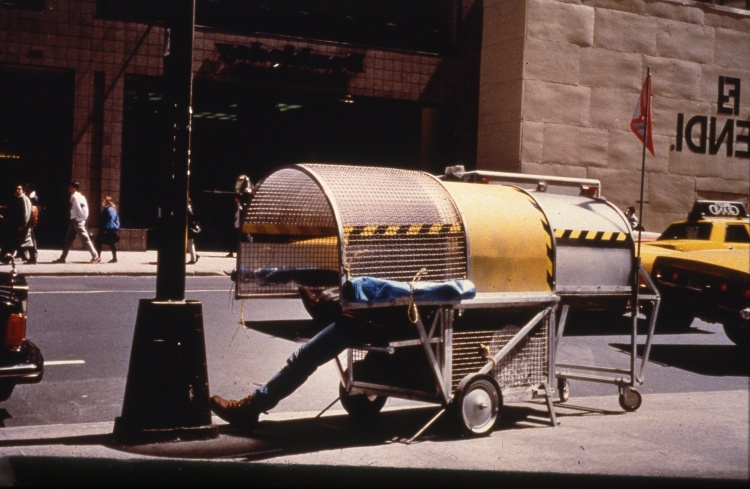1988-1989

The vehicle was tested and used by homeless people in New York and Philadelphia. Created in response to a growing number of homeless people, approaching 100,000 in New York City in the late 1980s, the vehicle was meant to combine practical and symbolic functions, offering strategies of survival to homeless people while calling into question the economic and political systems responsible for their marginalization.
For Wodiczko, this project is an example of what he calls “scandalous functionalism,” since it responds to needs whose existence is a social and political scandal. Made of aluminum, steel mesh, sheet metal, and plexiglas, the vehicle’s construction has been associated with constructivist functionalism and military technology used as an “antianti- homeless device.”
Made in consultation with actual homeless persons and modified according to their suggestions, the vehicle offered mobility and security. As a means of transportation and shelter, it was designed so as to provide scavengers with a sleeping space; as a survivalsupporting device, it was adapted to the easy collection and storage of bottles and cans. When folded, the vehicle could be used as a cart for collecting refundable cans and bottles.





